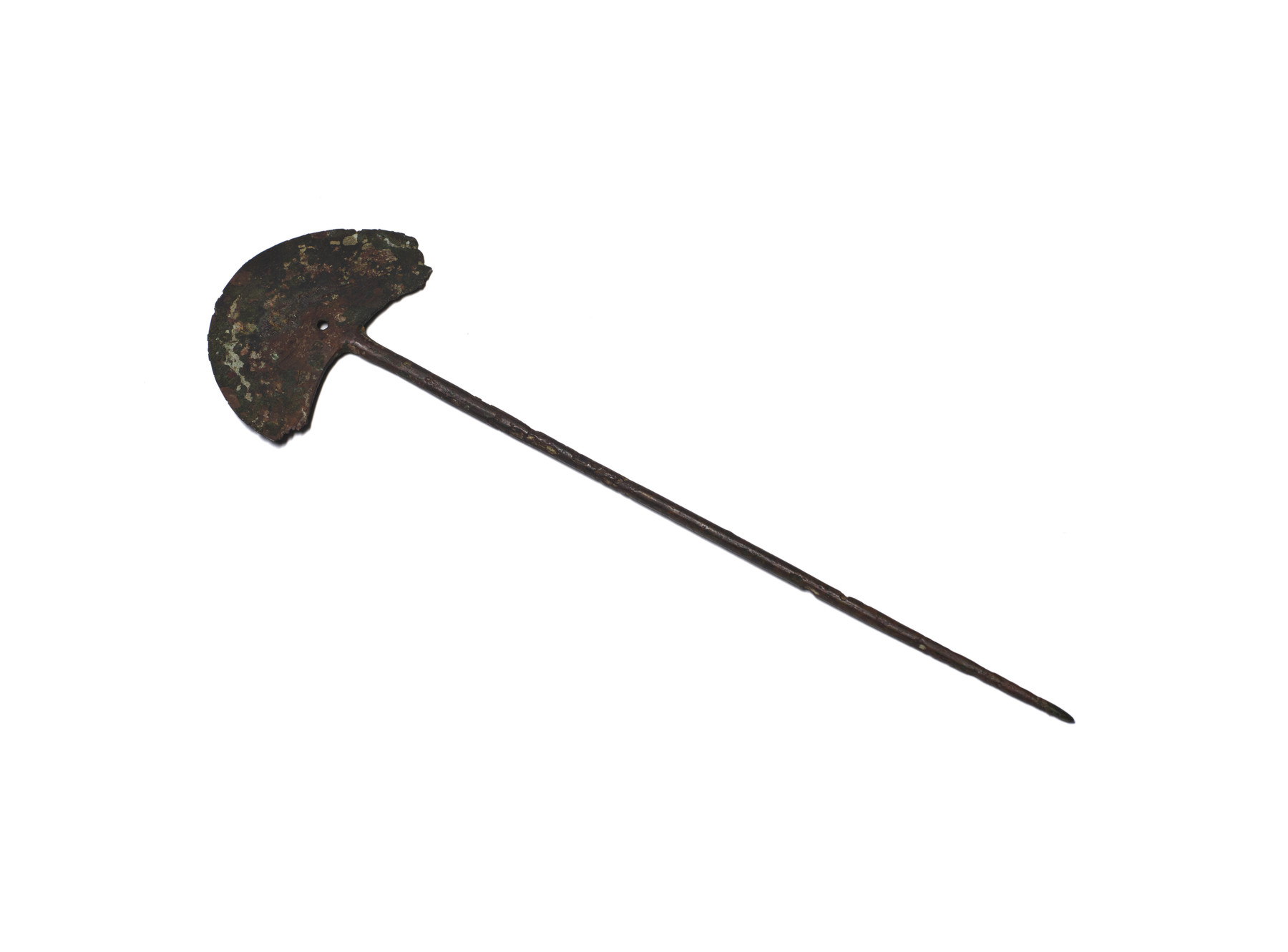Tupu Pin
(Ancient Americas )
Tupu (topu), is the Quechua language term for a pin. Tupu are an essential part of women's dress in the Andes, from Ecuador in the north to Northern Chile and Argentina in the south, and have been used since ancient times. Some early examples have been identified in archaological contexts in the region dating back to at least 300 BCE.
Women in the Andes have and continue to use these tupus to fasten shawls and woven shoulder coverings, known as acsu or anacu in Quechua. The tupu are often used in pairs, sometimes connected with a woven cord.
This tupu likely dates to the Inca era (ca. 1400-1533) or even the early colonial period (1533-1650). It is made of copper, and fairly plain in design when compared to the intricate detailing of later colonial examples. Nevertheless, the crescent-shaped head, while abstract, may reference the moon -- modern women of the Mapuche culture of Chile reported that they preferred round- or crescent-headed tupus for this reason. The present example is well-used and displays the marks of age, but also offers a tangible connection to the everyday lives of people who wore the stunning textiles from the Andes such as those in our collection.
Provenance
Provenance (from the French provenir, 'to come from/forth') is the chronology of the ownership, custody, or location of a historical object. Learn more about provenance at the Walters.
Acquired by Pope and Joan Atkins, Annapolis, Maryland, 1965-1966 [1]; given to Walters Art Museum, 2019.
[1] While traveling in Ecuador
Geographies
Ecuador (Place of Origin)
Measurements
Overall: H: 7 7/8 × W: 2 1/2 × D: 1/8 in. (20 × 6.35 × 0.32 cm)
Credit Line
Gift of Pope and Joan Atkins, 2019
Location in Museum
Not on view
Accession Number
In libraries, galleries, museums, and archives, an accession number is a unique identifier assigned to each object in the collection.
In libraries, galleries, museums, and archives, an accession number is a unique identifier assigned to each object in the collection.
2019.9.3


